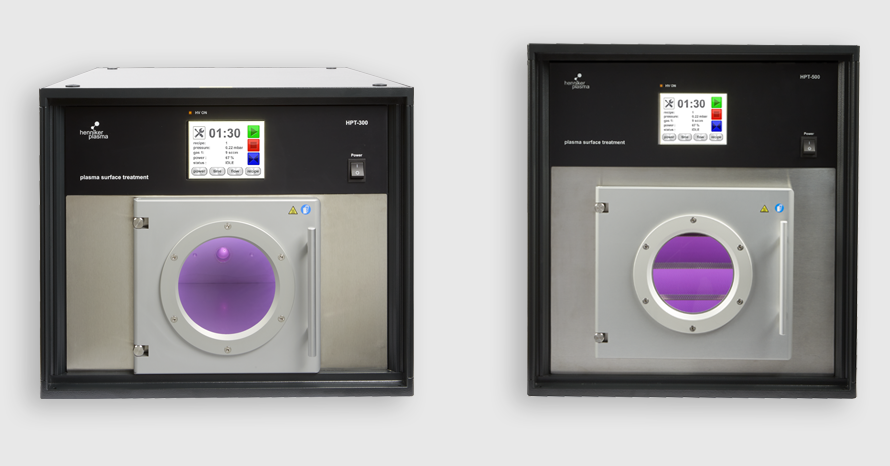Henniker Plasma provides a diverse selection of programmable plasma etching systems for chemical and physical etching applications, such as photoresist removal and enhancing the wettability of fluoropolymers like PTFE.
Chemical plasma etching is often used to “roughen” a surface on the microscopic scale. A reactive process gas is used to etch the component's surface. Material is accurately sputtered off, transformed to gas, and sucked away by a vacuum system. The surface area of the material is considerably enlarged, making it easily wettable.
Etching is used before printing, gluing, and painting, and is especially beneficial for processing POM and PTFE, which cannot be printed upon or bonded otherwise.
Physical etching, also known as reactive ion etching, involves the application of a highly directed flux of energetic, reactive ions to the material surface. As the reactive ions etched away the unmasked sample, a highly controlled patterning of the substrate occurs.
Each plasma system may be customized with a reactive ion etch electrode, making them an ideal low-cost laboratory development tool for semiconductor or organic electronics research.
Henniker Plasma Systems
- Simple to use TFT software control
- Lab/process scale chamber volumes starting from 100 mm diameter
- Operation with reactive gases
- Driven electrode configuration
- Continuously variable power output
- Gas shower and temperature control options
Models
Nebula
NEBULA plasma surface treatment systems include large format vacuum chambers and other innovative capabilities, all with the dependability of recipe-driven PLC control.

Image Credit: Henniker Plasma
HPT-300/500
The HPT-300 and HPT-500 are microprocessor-controlled benchtop plasma treatment systems used for surface activation, cleaning, and modification of a variety of materials, including polymers, metals, glass, and ceramics.

Image Credit: Henniker Plasma